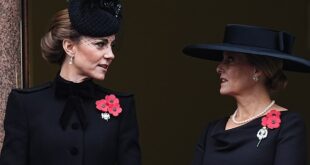PUBLISHED: 06:30 05 July 2020
Nepalese revellers sing and dance to traditional music during The Bisket Jatra Festival at Thimi on the outskirts of Kathmandu on April 14, 2012. The traditional Bisket Jatra festival is celebrated during the Nepali New Year. AFP PHOTO/ Prakash MATHEMA (Photo credit should read PRAKASH MATHEMA/AFP via Getty Images)
2012 AFP
Once a stop-off on the hippy trail, the Nepalese capital has a distinct musical culture – complete with its own version of hip hop – which must carefully navigate the country’s sensitive politics. SOPHIA DEBOICK reports
Become a Supporter
Almost four years after its creation The New European goes from strength to strength across print and online, offering a pro-European perspective on Brexit and reporting on the political response to the coronavirus outbreak, climate change and international politics. But we can only continue to grow with your support.
Kathmandu is the gateway to Everest and to dreams. Here, the final outpost of urbanity before the 13,000 feet ascent to Everest base camp, is where Edmund Hillary first met Tenzing Norgay before their 1953 summit of the mountain, and it is the point from where thousands have departed to follow them since, fostering the same dreams of adventure and glory.
The climbers who flow through Kathmandu also rub shoulders with those looking for spiritual enlightenment in a place sacred to both Hindus and Buddhists, and the city has a long countercultural pedigree – one of the final destinations on the many-branched hippie trail, the city was a must-see for George Harrison when he ventured East to study at the ashram of the Maharishi Mahesh Yogi.
But despite being a byword for the transcendent, teeming Kathmandu is a city mired in the problems of many of the world’s great metropolises – poverty, crime and gridlocked traffic with its attendant smog. Lockdown has eased the traffic and cleared the skies meaning that Everest, more than 100 miles away, can once again be glimpsed from the city itself, and it has also cleared streets once choked with tourists, although this has also meant cutting off the city’s economic lifeblood.
Usually the labyrinthine alleyways of the Thamel district of the sprawling city are thronged with post-adolescent backpackers and post-retirement world tourers. The temples and palaces of the UNESCO site Durbar Square are a main attraction, and at the major Hindu and Buddhist holy sites on the outskirts of the city the centrality of music to Nepalese culture becomes clear.
The Pashupatinath temple complex, dating back to the 5th century and dedicated to the Hindu god Shiva, lies on the banks of the Bagmati River, two miles east of the city, and is the holiest site in the Kathmandu Valley for the majority Hindu population. Music plays a key part in devotion here, from the bhajans and bhakti (devotional songs), to celebratory festivals like Holi – after all, Lord Krishna himself played the flute.
At Pashupatinath the Kirateshwar Sangeet music school puts on performances of traditional music at each full moon. The Buddhist population of the city, making up less than 10%, centres on the Boudhanath stupa (dome-like buildings, containing relics) on the outskirts of the city, which rings with the chant of the city’s Tibetan émigrés. The music of the Newar peoples of the Kathmandu Valley brings together both Hindu and Buddhist influences, and their traditional Dapha music follows a cycle of songs for different seasons, festivals and times of day.
One Kathmandu-born artist has taken religious music and made it a secular sensation. Ani Choying Drolma, dubbed ‘The Singing Nun’, fled her traumatic childhood as a teenager and became a Buddhist nun at the Nagi Gompa monastery, less than 10 miles to the north of the capital, on the edge of the Shivapuri Nagarjun National Park. There she learnt Tibetan chant, her teachers recognising her rare gift for this meditative practice.
In 1993 an American musician, Steve Tibbetts, visited the monastery and, struck by the then 22-year-old nun’s ethereal vocals, recorded her and sent the tapes to producer Joe Boyd, known for his work with such prog and folk acts as Pink Floyd and Fairport Convention.
The album Chö (1997) was the result, and the nun toured around the world with Tibbetts. She has released some 13 albums since, her meditative vocals variously backed by traditional singing bowls or synthesisers.
You may also want to watch:
Ani Choying Drolma’s activities have not been without controversy. Buddhist nuns, and Nepalese women in general, have rarely been socially visible, and a woman who tours internationally, listens to western music (Bonnie Raitt is her particular favourite), drives her own car, and advocates for girls’ education in a still oppressively patriarchal society (she founded the Arya Tara school for girls, near the Boudhanath temple, in 2000), was always going to raise eyebrows in conservative Nepal. As an irritant to traditional values, Ani Choying Drolma has some unlikely bedfellows.
Nepalese hip hop first emerged in the late 1990s and early 2000s, when the term ‘Nephop’ started to be used. The birth of the genre was against the highly-charged background of the Maoist insurgency and the Nepalese Civil War, and while Nephop is informed by its US forefathers in sound and attitude, it has often focussed on the urgent political and social problems specific to Nepal in its lyrics, challenging the status quo. Nephop’s poster boy is recent years was Yama Buddha, who was raised in Kathmandu and ran the seminal Raw Barz rap battle events there.
He moved to London and was supporting his dreams of international success through the unlikely means of working for the Royal Mail in Ruislip before his death by suicide in 2017, aged just 29. But his legacy goes on, having sparked a new wave of Nephop.
Nephop’s rising stars are ambitious self-starters who make canny use of technology in the absence of a substantial Nepalese music industry.
Twenty somethings Bluesss, a rapper, singer and producer whose 2019 album Blue Up High brought together many of the new faces of Nephop, Uniq Poet, whose video for the single Straight Outta Kathmandu (2019) used the colourful street art of the city as a backdrop and racked up a million YouTube views in a matter of days after its release, and self-proclaimed ‘King of Nephop’ Lil Buddha, are all part of the current Kathmandu scene.
Uniq Poet and Lil Buddha have actively courted controversy, the latter with his energetically lewd lyrics, and the former with lines like “We even got a Hindu god who smokes and chills” (a reference to Shiva, believed to have smoked marijuana as an aid to meditation), and in Nepal lyrical daring is no minor issue.
In recent years, the ruling Nepal Communist Party has sought to curb freedom of speech through new social media laws. Arrests of journalists have become common and now musicians too are in the firing line.
Last year, pop-dance singer Durgesh Thapa was arrested after his song Don Aayo, a commercial tie-in with the Kathmandu-based brewery Arna with its refrain “Happy Tihar, Chiso Beer”, was accused of encouraging drug and alcohol use during the Hindu festival of Tihar, during which the bhailo and deusi traditional songs are sung.
Local police claimed “There has been the trend of organising the traditional deusi–bhailo programme in a vulgar manner, which has led to the degradation of our religious values”, and the same week rapper Samir Ghising, aka VTEN, was arrested for “antisocial, vulgar and derogatory language, and spreading the wrong message in society”. Artists have been forced to expunge their videos from the internet.
Music can divide, but it can also unite, and when the devastating earthquake of 2015 hit Nepal, killing almost 9,000 and threatening Kathmandu’s ancient architectural treasures, artists across genres responded in force.
Raju Lama of traditional folk band Mongolian Heart got involved in fundraising efforts while Uniq Poet released the song Kina? (Why?) about the tragedy. And it seems that whether Kathmandu bands look to native folk music, as Kutumba and Night do, or the western sounds of grunge, metal and classic rock, like 1974AD, Albatross, and Robin and the New Revolution, a sense of rootedness in, and concern for, the country they come from remains. As Uniq Poet puts it in Straight Outta Kathmandu: “Gimme the mic, and I’m ready to rap/ Put my nation on the map with a pen and a pad.”
Become a Supporter
Almost four years after its creation The New European goes from strength to strength across print and online, offering a pro-European perspective on Brexit and reporting on the political response to the coronavirus outbreak, climate change and international politics. But we can only rebalance the right wing extremes of much of the UK national press with your support. If you value what we are doing, you can help us by making a contribution to the cost of our journalism.
Become a supporter




